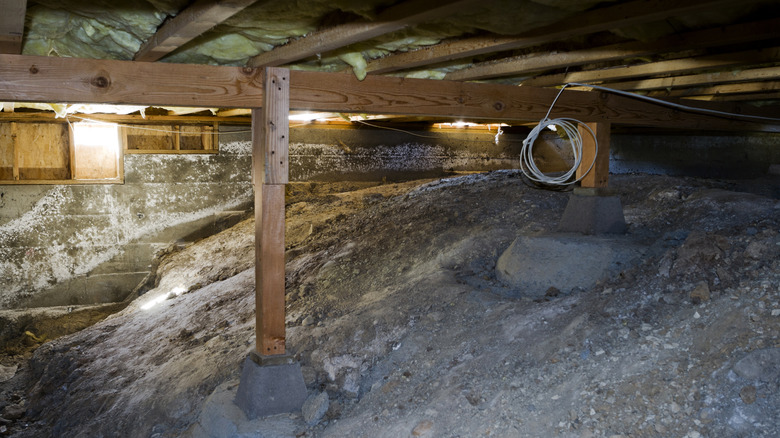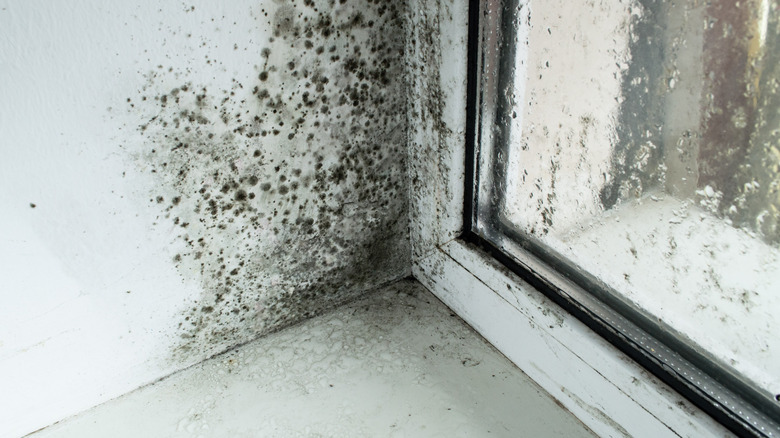Prevent Mold Growth In Your Home During Winter By Protecting These Vulnerable Areas
We may receive a commission on purchases made from links.
The onset of winter doesn't mean your home is free from the risk of mold. Does mold grow in the cold? Unfortunately, the answer is a resounding yes. While mold may go dormant in colder temperatures, it can revive and continue to sprout more when warmer seasons return. If you suddenly have unexplained coughing, wheezing, or eye or skin irritation when bundling up indoors, mold may be making its presence known Preventing mold in the winter is vital as you create a cozy and warm space to fight the cold. However, blasting your heat with little ventilation, creating a possible mix of warmth, moisture, and poor air circulation, can create the ideal condition for mold to prosper. For your health and structural safety, learn how to identify mold in your home. In winter, look out for different mold types that can survive cooler conditions, including Cadosporium, Alternaria, Aspergillus, and Penicillium.
The first step to preventing mold is knowing where to look during your winter search. That cold-resistant mold is likely in your crawlspace, attics, basements, closets, and windows. Remember that ventilation, fixing leaks, cleaning gutters, and reducing clutter are standard tips to prevent mold from entering your home regardless of the season.
Basements and crawlspaces
If you have a crawlspace, don't make the mistake of forgetting about it as so many others do.Like your basement, the crawlspace is a small area — just tall enough to crawl around in — located under the main floor of a home. As the buffer between the house and the damp earth below, it often collects water and humid air. In addition to becoming a haven for mold, the crawlspace could be affecting the interior's humidity, too. Installing a better airflow network in this area can provide the ventilation it needs. Adding an exhaust fan, such as the CADPXS Crawlspace Ventilation Fan, that transfers air to the outside or a dehumidifier system can help.
Since the average basement is fully or partially below ground, it is surrounded by soil that may be extra moist from poor drainage. That moisture can further seep in through cracks, creating intense humidity and lots of mold. Like the crawlspace, dehumidifiers, such as the Amazon Basics Dehumidifier, are essential for controlling those humidity levels. Ideally, the humidity level in this area should be between 30 to 50%. Use the ThermoPro TP49 Digital Hygrometer to keep up with your humidity readings and take action if needed. Cladosporium — a brown, blackish-brown, or greenish-gray mold — and Alternaria — a gray or black mold — are often found in damp basements. If you have a lot of old storage boxes in the basement, look out for Penicillium, which may start affecting the household's respiratory system.
Window sills and frames
Imagine sitting by the window sill and watching the snowfall, only to notice budding mold colonies. When window condensation hits — a product of warm indoor air and cold outdoor air— it allows the moisture that mold loves so much to set into your window surfaces. Windows can also develop moisture buildup from a lack of ventilation during showering or cooking.
Solid insulation is a must, so check your windows and doors for drafts and quickly fill any gaps and cracks you find. Your window treatments, like curtains and blinds, also provide a barrier from the moist, cold, outdoor air. Take advantage of the days when it's not freezing to briefly open a window or door to air out the space. Even if you have an HVAC system, a ceiling fan installation is worth considering to aid your air circulation. Don't feel like conducting an overhead installation? Consider a Hurricane Supreme Oscillating Wall Mount Fan. Keeping windows clean isn't just about sanitation — it's also important to remove the ice and frost. Allowing window ice to build can cause moisture, wood rot, and eventually mold and mildew. One benefit of washing your windows with rubbing alcohol is de-icing.


